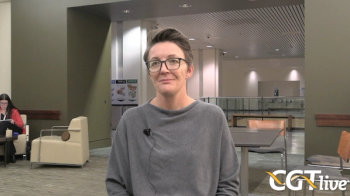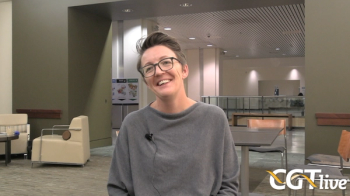
Reexamining the Outcome Measures Used in Ophthalmic Gene Therapy Trials
Bart P. Leroy, MD, PhD, head of the Department of Ophthalmology at the Center for Medical Genetics of Ghent University Hospital, discussed the need to reevaluate the goal posts used to determine whether gene therapies for eye indications come to market.
This is the third part of a Q&A with Bart P. Leroy, MD, PhD. For the first part,
Spark Therapeutics’ voretigene neparvovec (Luxturna), a gene therapy intended to treat patients with inherited retinal dystrophy (IRD) related to mutations in the RPE65 gene, was evaluated in a pivotal phase 3 clinical trial (NCT00999609), which showed that the treatment produced improvements in light sensitivity but did not improve best-corrected visual acuity (BCVA). Although the gene therapy was ultimately approved by the FDA and European Medicines Agency, many other gene therapies for ophthalmic indications are not approved because they fail to meet BCVA improvement standards put forth by these agencies, even if they demonstrate other forms of vision improvement.
Bart P. Leroy, MD, PhD, the head of the Department of Ophthalmology at the Center for Medical Genetics at Ghent University Hospital, coauthored a poster presented at
To inquire further about the process of seeking these indications, CGTLive™ spoke with Leroy about the current regulatory standards used to evaluate gene therapies for conditions of the eye. He emphasized that even when therapies do not improve BCVA, they can produce other changes in vision, such as improvements in light sensitivity, which have a meaningful impact on activities of daily living for patients.
CGTLive: In addition to the data we previously discussed, is there anything else you would like to share with our audience?
Bart P. Leroy, MD, PhD: I think what I would like to add to the whole story, is giving a little bit of an IRD expert perspective to my colleagues in retina and ophthalmology in general. With Luxturna, we have had the first success in this innovative field of IRDs. It's certainly an attestation to the fact that we can get to the eye; we can look into the eye and see what we are doing wrong, necessarily. Luckily enough, there's not much going wrong with this type of therapy, but we are privileged as a specialty, as ophthalmologists and retinal specialists, that we can access that; as opposed, for example, to our liver expert colleagues who cannot directly visualize what they're doing in the liver—albeit they do have the ability to look with ultrasound.
We are, I think, at the forefront of technology, but what we are currently seeing is that although we did have a lot of success in getting Luxturna to market, other innovative therapies that are being developed and very much under study currently have failed sometimes to reach the stage where they get market authorization—and this is often not because of the fact that they don't work. But something we are struggling with as IRD experts doing gene therapy is bringing to the fore the fact that something improves retinal function—visual function—in such a way that the regulators—FDA in the US and EMA in Europe—are able to say, “Well, this is good enough for us, it's going to be something that is meaningful to patients, and we’ll just give you market authorization.”
I've seen a couple of products fail that I've actually assisted in the development of for reasons that are not the right reasons. Currently, what I want my colleagues to know, is that there is an absolute need for some sort of divergence from when we evaluate antivascular endothelial growth factor products for diabetic retinopathy or age-related macular degeneration—where gaining 3 lines of BCVA is what the FDA demands for when you use BCVA as an outcome measure and gaining 2 lines on a logMAR scale is what EMA demands. Listen, some of our IRD patients have never had 3 lines or 2 lines. We need to come up with innovative outcomes—innovative ways that can express that there is success of treatment that correlates with activities of daily living. We also need to help the regulators to see that there is an impact on activities of daily living by developing those outcome measures. We need to talk to the regulators and use our friends from the patient communities to convince the regulators that they might not get the same type of outcomes seen in more common diseases, which have more spectacular results, in the IRD sphere. We need to educate and help our regulators to understand that what we can achieve in those diseases is sometimes stability of disease or bringing down the speed of degeneration.
Sometimes I myself ask the question, and I've asked the regulators at FDA and EMA this question; I've asked patients this question: “What is enough for you to prove that something works?”. This is a mountain that we have to climb after the initial honeymoon of having this quite successful therapy that has proven its merit—in our study, and in many other studies in many other countries—convincing evidence that what we authorized Luxturna to come on the market for is actually something that really was worthwhile. We now have that mountain to climb to get all these other innovative products over the finish line. Climbing a mountain is not something we cannot do; putting man on the moon asked for a lot of efforts—combining efforts from so many different aspects of society. I'm pretty certain and actually quite confident and optimistic about the future of such innovative treatments, even though we now have come back from a honeymoon with Luxturna. This field of IRDs needs a lot more attention—a lot more investment. We have to focus our energy—our efforts—work together. I have had pleasant contacts with all the stakeholders in this debate. And I think that we will get there in the end.
Transcript edited for clarity.
REFERENCE
1. Hertens L, Cauwenbergh CV, den Broeck FV, et al. Results of Belgian patients with RPE65-related inherited retinal dystrophy 6 months after treatment with voretigene neparvovec. Presented at: Association for Research in Vision and Ophthalmology (ARVO) 2023 Annual Meeting. April 23-27, 2023; New Orleans, LA. Abstract #762 – C0363
Newsletter
Stay at the forefront of cutting-edge science with CGT—your direct line to expert insights, breakthrough data, and real-time coverage of the latest advancements in cell and gene therapy.









































